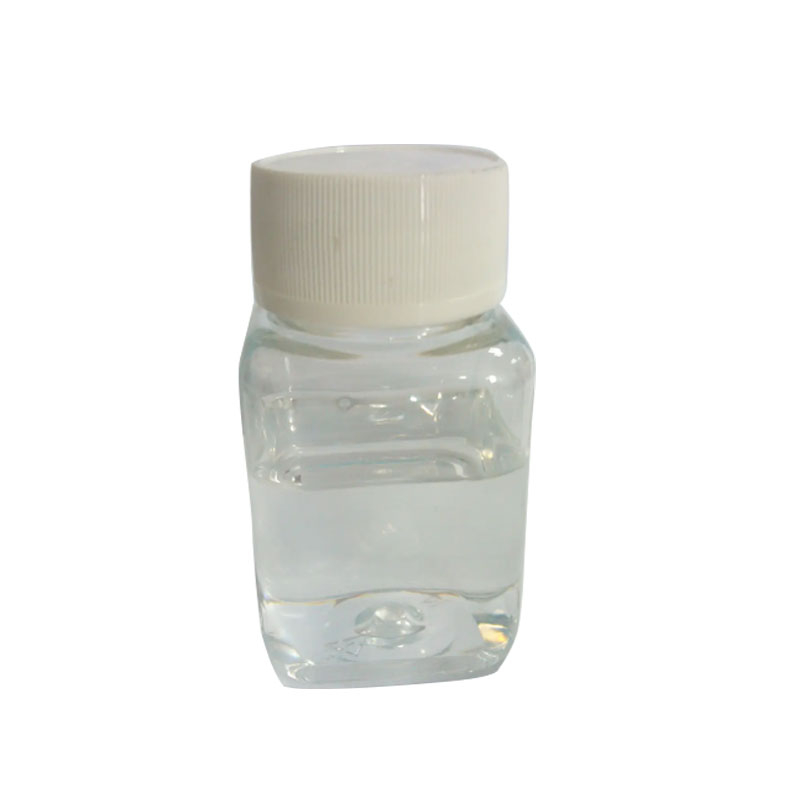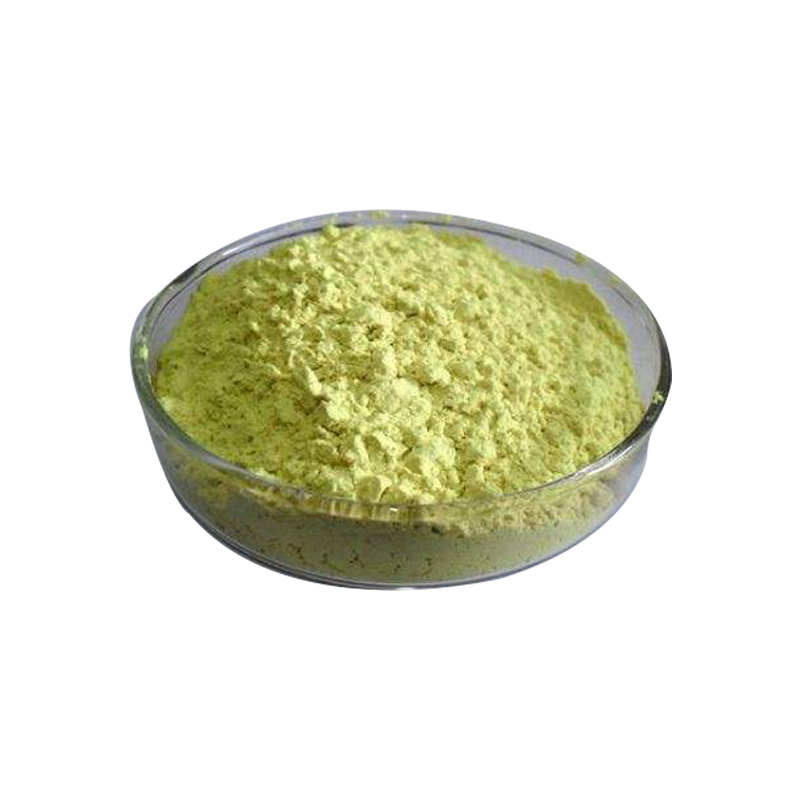Products Description of Pyridine-2,6-dicarboxylic acid CAS#499-83-2Pyridine-2,6-dicarboxylic acid is an important pharmaceutical synthesis intermediate with a wide range of uses. Pyridine-2,6-dicarboxylic acid exists naturally in bacterial spores, but the content is low, which cannot meet the demand, and it is not easy to extract. It is not conducive to industrial production and application.
Contact Now
Products Description of Glyphosate CAS#1071-83-6Glyphosate is an organophosphorus herbicide, a highly effective, low-toxic, broad-spectrum herbicide with systemic conduction. This product dissolves the wax layer on the surface of the leaves, branches and stems of weeds, and the drug effect quickly enters the plant conduction system to produce effects, causing the weeds to wither and die. It can effectively control annual and biennial grasses, sedges and broad-leaved weeds, and has a good control effect on perennial weeds with bad habits such as thatch, cyperus and bermudagrass.
Contact Now
Products Description of 2,6-Di-tert-butylphenol CAS#128-39-2White or light yellow crystalline solid with phenol odor. Easily soluble in organic solvents such as alcohols, esters, alkanes, aromatic hydrocarbons, and almost insoluble in water.
Contact Now
Products Description of 3,5-Pyridinedicarboxylic acid CAS#499-81-03,5-Pyridinedicarboxylic Acid, English name 3,5-Pyridinedicarboxylic Acid, is a chemical substance with molecular formula: C7H5NO4.3,5-Pyridinedicarboxylic acid Chemical PropertiesMelting point >300 °C (lit.)Boiling point 295.67°C (rough estimate)density 1.5216 (rough estimate)refractive index 1.6280 (estimate)storage temp. Sealed in dry,Room Temperaturesolubility 1.0g/lform Powderpka2.8(at 25℃)color White to almost whiteWater Solubility insolubleBRN 131640InChIInChI=1S/C
Contact Now
Products Description of L-Arginine-L-Aspartate CAS#7675-83-4L-Arginine L-aspartate Chemical PropertiesMelting point 220-221 °Cstorage temp. 2-8°Csolubility Very soluble in water, practically insoluble in alcohol and in methylene chloride.color White to Off-WhiteStability:HygroscopicLogP-1.287 (est)CAS DataBase Reference7675-83-4(CAS DataBase Reference)EPA Substance Registry SystemArginine aspartate (7675-83-4)Product Application of L-Arginine-L-Aspartate CAS#7675-83-4Used as cosmetic amino acid nutrient, amino acid nutrient food additive, etc.
Contact Now
Products Description of 1-(2,6-Dichlorophenyl)indolin-2-one CAS#15362-40-0Used as the intermediate of diclofenac1-(2,6-Dichlorophenyl)indolin-2-one Chemical PropertiesMelting point 115-119°CBoiling point 488.6±45.0 °C(Predicted)density 1.432±0.06 g/cm3(Predicted)storage temp. Sealed in dry,2-8°Csolubility Chloroform (Slightly), Methanol (Slightly)pka-4.85±0.20(Predicted)color Off-White to Light BrownBRN 1538309Stability:StabilityCAS DataBase Reference15362-40-0(CAS DataBase Reference)Safety InformationSafety Statements 24/25WGK Germany 3RTECS&n
Contact Now
Products Description of 2,2,6,6-Tetramethylpiperidinooxy CAS#2564-83-22,2,6,6-Tetramethylpiperidinyl oxide, abbreviated as TEMPO, is a piperidine-type nitrogen oxide free radical. TEMPO is an orange-red, easily sublimable crystal or liquid, and is easily soluble in solvents such as water, ethanol, and benzene.
Contact Now
Products Description of Pyridine hydrochloride CAS#628-13-7Pyridine, an organic compound, is a six-membered heterocyclic compound containing a nitrogen atom. It can be regarded as a compound in which one (CH) in the benzene molecule is replaced by N, so it is also called nitrogen benzene. It is a colorless or slightly yellow liquid with a foul odor. Pyridine and its homologues exist in bone tar, coal tar, coal gas, shale oil, and petroleum.
Contact Now
Products Description of Bis-phosphonic acid tetrasodium salt CAS#3794-83-0This product is a brown-yellow viscous liquid. Relative density (20°C) 1.40. Pure product melting point 198-199°C, soluble in water and ethanol.
Contact Now
Products Description of 2-Hydroxy-3-trifluoromethylpyridineCAS#22245-83-62-Hydroxy-3-trifluoromethylpyridine, as a pyridine derivative, plays an important intermediate role in the chemical industry, medical and pesticide fields, etc.2-Hydroxy-3-trifluoromethylpyridine Chemical PropertiesMelting point 150-153°CBoiling point 223.7±40.0 °C(Predicted)density 1.398±0.06 g/cm3(Predicted)storage temp. Inert atmosphere,Room Temperatureform powder to crystalpka9.67±0.10(Predicted)color White to Almost whiteInChIInChI=1S/C6H4F3NO/c7-6(8,9)4-2-1-3-10-5(4)11/h1-3H,(H,10,
Contact Now
Products Description of BIS(2-METHOXYETHOXY)METHANE CAS#4431-83-8The molecular formula of bis(2-methoxyethoxy)methane is C7H16O4 and its molecular weight is 164.1995.BIS(2-METHOXYETHOXY)METHANE Chemical PropertiesBoiling point 60°C 1,5mmdensity 0,995 g/cm3vapor pressure 22Pa at 25℃refractive index 1.4140Fp 60°C/1.5mmform liquidcolor ColourlessWater Solubility Fully miscible in water.BRN 1700087LogP-0.69 at 22℃EPA Substance Registry System2,5,7,10-Tetraoxaundecane (4431-83-8)Safety InformationSafety Statements 24/25HS Code 2909199090Pr
Contact Now
Products Description of 6-Fluoronicotinic acid CAS#403-45-26-Fluoronicotinic acid is a pyridine compound, which is often used as a pyridine intermediate and a pharmaceutical intermediate.
Contact Now
Products Description of Pyridine hydrobromide CAS#18820-82-1Pyridine hydrobromide is used as an intermediate for cephalosporin antibiotics such as ceftriaxone, cefapirin, and ceftazidime.Pyridine hydrobromide Chemical PropertiesMelting point 200 °C (dec.)(lit.)storage temp. Inert atmosphere,Room Temperatureform powder to crystalcolor White to Light yellow to Light orangeWater Solubility Soluble in water.Sensitive HygroscopicBRN 3615336InChIInChI=1S/C5H5N.BrH/c1-2-4-6-5-3-1;/h1-5H;1HInChIKeyBBFCIBZLAVOLCF-UHFFFAOYSA-NSMILESC1C=CN=CC=1.BrCAS DataBase
Contact Now
Products Description of Naphthalene-2-sulfonic acid CAS#120-18-3White to slightly brown leaf-shaped crystals. Melting point 91℃ (anhydrous), 83℃ (trihydrate), 124℃ (monohydrate). Soluble in water, alcohol and ether.
Contact Now
Products Description of Pyridine CAS#110-86-1Pyridine (molecular formula C6H5N) is a six-membered heterocyclic compound containing a nitrogen atom, that is, a compound generated by replacing a -CH= in a benzene molecule with nitrogen. It is similar to benzene, has the same electronic structure, and is still aromatic, so it is also called nitrogen benzene and nitrogen-benzene. It is a colorless liquid with a special odor at room temperature, with a melting point of -41.6℃ and a boiling point of 115.2℃. It forms an azeotropic mixture with water, and the boiling point is 92-93℃.
Contact Now
Products Description of 2-bromo-3-methylpropiophenone CAS#1451-83-8White powder2-bromo-3-methylpropiophenone Chemical PropertiesBoiling point 134-135 °C(Press: 8 Torr)density 1.357±0.06 g/cm3(Predicted)InChIInChI=1S/C10H11BrO/c1-7-4-3-5-9(6-7)10(12)8(2)11/h3-6,8H,1-2H3InChIKeyQGGNDYQVUDZPJB-UHFFFAOYSA-NSMILESC(C1=CC=CC(C)=C1)(=O)C(Br)C Factory and Equipment ShowFast delivery timeInventory 2-3 working days New production 7-10 working days
Contact Now
Products Description of 2,2'-[(1-Methylethylidene)bis[(dibromo-4,1-phenylene)oxymethylene]]bis[oxirane]-4,4'-(1-methylethylidene)bis[2,6-dibromophenol] copolymer CAS#68928-70-1Tetrabromobisphenol A-tetrabromobisphenol A glycidyl ether copolymer is widely used in flame retardant potting materials, flame retardant laminate adhesives, etc.
Contact Now
2-Methyl-1-propanol CAS#78-83-1Isobutanol, additionally recognised as isopropyl alcohol or 2-methyl propanol, is a colorless and flammable liquid. It is one of the most important components of clean tea leaves, black tea and inexperienced tea to produce the top notch aroma. The molecular weight of isobutanol is 74.12, with a boiling factor of 107.66 ℃, a relative density of 0.8016, a refractive index of 1.3959, and a flash factor of 37 ℃.
Contact Now
Products Description of Isonicotinic acid CAS#55-22-1Isonicotinic acid is also known as pyridine-4-carboxylic acid. White needle-shaped crystals. Odorless, can sublime. Molecular weight 123.11. Melting point 319℃. Slightly soluble in cold water, soluble in hot water, insoluble in alcohol, benzene, ether. It is an amphoteric compound, soluble in both acid and alkali. Soluble in hot water and ethanol, slightly soluble in cold water and ether.
Contact Now
Products Description of 4-(3-AMINOPHENYL)-2-METHYLPYRIMIDINE CAS#175201-90-83-(2-Methylpyrimidine)aniline is a chemical.CAS No.
Contact Now
Products Description of 2-Amino-3-Pyridinecarboxaldehyde CAS#7521-41-72-Amino-3-pyridinecarboxaldehyde is a pyridine derivative with significant alkalinity, commonly used in organic synthesis and pharmaceutical chemical intermediates. It can synthesize organic compounds with pyridine skeletons through various chemical reactions such as condensation reaction, cyclization reaction and substitution reaction. It has a wide range of applications in basic chemical research.
Contact Now
Products Description of 3-Pyridylacetic Acid Hydrochloride CAS#6419-36-93-Pyridine acetate hydrochloride is a colorless solid with m.p.161~163℃, soluble in water.3-Pyridylacetic Acid Hydrochloride Chemical PropertiesMelting point 161-163 °C(lit.)storage temp. Inert atmosphere,Room Temperaturesolubility DMSO (Sparingly), Methanol (Slightly)form Crystalline Powder, Crystals and/or Chunkscolor White to light yellow or beigeMerck 14,7971BRN 3696630Stability:HygroscopicInChIInChI=1S/C7H7NO2.ClH/c9-7(10)4-6-2-1-3-8-5-6;/h1-3,5H,4H2,(H,9,10);1HInChIKe
Contact Now
Products Description of Dinonylnaphthalenesulfonic acid CAS#25322-17-2Dinonylnaphthalenesulfonic acid is a chemical substance with the molecular formula C28H44O3S.Dinonylnaphthalenesulfonic acid Chemical PropertiesBoiling point 94-99 °Cdensity 0.852 g/mL at 25 °Crefractive index n20/D 1.465Fp 30 °Fstorage temp. 2-8°Csolubility H2O: insolubleCAS DataBase Reference25322-17-2(CAS DataBase Reference)EPA Substance Registry SystemNaphthalenesulfonic acid, dinonyl- (25322-17-2)Safety InformationHazard Codes F,Xn,NRisk Statements&nb
Contact Now
Products Description of 2-Thiophenecarboxylic acid CAS#527-72-02-Thiophenecarboxylic acid is a kind of colorless crystal.
Contact Now


















![2,2'-[(1-Methylethylidene)bis[(dibromo-4,1-phenylene)oxymethylene]]bis[oxirane]-4,4'-(1-methylethylidene)bis[2,6-dibromophenol] copolymer CAS#68928-70-1](https://d3rnfhc14zcmdf.cloudfront.net/cdn/ff/4aHmJfFwYpEABMbnR7HTG1yocAzE1PHApY-zrZ-DCjo/1717752361/public/styles/chanpinzhutu/public/2024-06/%E6%97%A0%E8%89%B2%E6%B6%B2%E4%BD%93%20%283%29%20-%20%E5%89%AF%E6%9C%AC_5.jpg?itok=G1rPjRBd)














